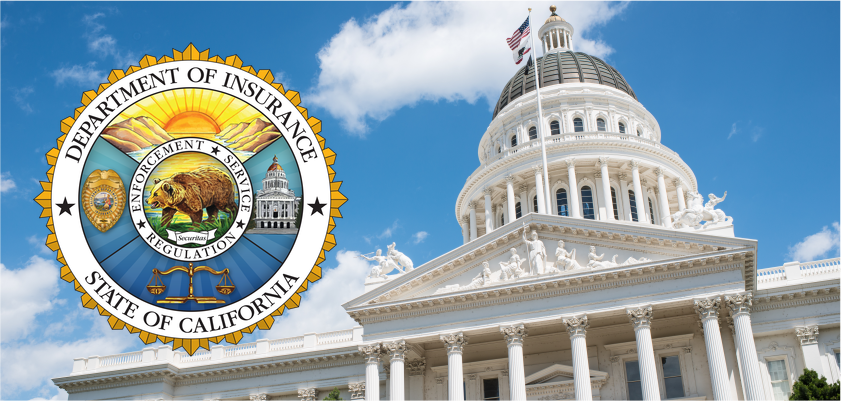California Proposition 103: The Unintended Consequences for Consumers

In 1988, California voters passed Proposition 103 by a narrow margin of 51.1% to 48.9%. Designed as a populist response to increasing California auto insurance rates, the proposition sought to protect consumers by limiting how insurance companies set rates. While the measure was intended to curb price increases and promote fairness, the effects over the past three decades have been quite the opposite. Rather than benefiting consumers, Proposition 103 has reduced competition, stifled innovation, and left many drivers with fewer choices and higher costs.
What Proposition 103 Changed in California’s Auto Insurance Market
Proposition 103 mandated sweeping reforms to California’s auto insurance market, many of which remain in place today. Here’s an overview of the key changes:
- Prescribed Rate Development: Insurance rates must be set according to specific variables.
- Mandatory Rating Factors: Proposition 103 established three mandatory rating factors (driving record, annual miles driven, and years of driving experience) that insurers must prioritize when setting premiums.
- The ‘Good Driver’ Discount: Drivers with clean records are entitled to a 20% discount on their premiums.
- Government Oversight: An elected insurance commissioner must approve rate changes before they can be implemented.
- Rate Rollbacks: Insurance companies were required to reduce their rates by 20% upon the law’s passage.
The Unintended Consequences: How Proposition 103 Has Harmed Consumers
While proponents of Proposition 103 argue that it has helped to lower auto insurance rates, the reality is more complex. Several key unintended consequences have emerged, which have had a significant negative impact on both consumers and the insurance market.
Reduced Competition and Fewer Choices
One of the most significant effects of Proposition 103 has been the reduction in competition within the California auto insurance market. By imposing strict regulatory controls, the measure has made it difficult for new companies to enter the market. Smaller insurers, particularly those with innovative pricing models, have been discouraged from operating in the state. The result? Consumers have fewer options to choose from, and those that remain face less competitive pricing.
Stifled Innovation
Proposition 103’s rigid rules regarding how insurance is priced have prevented insurers from adopting new, more effective pricing models. While other states have embraced advanced rating techniques—such as using telematics data, credit scores, or advanced machine learning to predict risk—California remains stuck in 1988. The three mandatory factors outlined by Proposition 103—driving record, annual miles driven, and years of driving experience—are outdated and fail to capture the complexity of modern risk assessment. As a result, many drivers are unable to take advantage of the car insurance discounts and tailored policies available in other parts of the country.
Higher Premiums for Many Drivers
Although some consumers may benefit from lower rates due to the mandatory 20% discount for good drivers, others end up paying more. The law encourages a system where lower-risk drivers effectively subsidize higher-risk drivers. For example, drivers with clean records who don’t drive as often often end up paying more to subsidize higher-risk drivers who may drive more miles or have a history of accidents.
The Problems with Mandatory Rating Factors
The three mandatory rating factors imposed by Proposition 103—driving record, annual miles driven, and years of driving experience—were determined without significant scientific research into their predictive value for auto insurance risk. Since the law’s passage, technology and data analysis techniques have advanced significantly. Today, insurers use multivariate pricing models and other tools to analyze the relationships between hundreds of variables, from vehicle type to driving behavior, to better predict risk and set premiums.
However, Proposition 103’s outdated rating system limits insurers’ ability to incorporate these new factors, leading to less accurate pricing and fewer opportunities for consumers to benefit from lower premiums based on factors like credit scores or vehicle safety features. The result is a less efficient system that may not reflect the true risk profile of many drivers.
What Other States Can Offer That California Cannot
Outside of California, many states allow insurers to use additional factors and offer discounts that California’s Proposition 103 prohibits. These include:
- Advanced Purchase Discounts
- Homeownership Discounts
- Occupation-based Discounts
- Education-based Discounts
- Non-Drinker Discounts
- Telematics-based Discounts (e.g., Progressive Snapshot, which tracks driving behavior)
- Pay-in-Full Discounts
- Electronic Funds Transfer Discounts
These innovative rating factors and discounts enable insurers to offer more competitive pricing and more personalized policies, giving consumers more ways to save. Unfortunately, California drivers are unable to access many of these options due to Proposition 103’s restrictions.
Rate Leakage, Soft Premium Fraud, and Subsidization
One of the most problematic aspects of Proposition 103’s rating system is its reliance on the “annual miles driven” factor. In the absence of modern telematics technology, this rating variable is notoriously difficult to validate. As a result, both agents and consumers have found ways to manipulate this factor in their favor, leading to inaccurate rates and “rate leakage.”
For example, consumers might underreport their annual miles driven to secure lower rates, while agents may quote policies with inaccurate mileage estimates to win business. This creates a system where consumers who report their mileage accurately end up subsidizing those who manipulate the system. In turn, this inefficiency drives up premiums for everyone.
Additionally, Proposition 103 has led to a broader problem of cross-subsidization, where lower-risk drivers are forced to pay for the higher-risk drivers. Those who maintain continuous coverage, have better credit histories, or drive fewer miles are essentially subsidizing those who do not.
The Bottom Line
While Proposition 103 was created with the intention of protecting consumers from high insurance premiums, the unintended consequences have been significant. Reduced competition, stifled innovation, and a flawed rating system have led to higher costs and fewer choices for California drivers.
To address these issues, California should consider updating its regulations to allow for more flexible rating systems that reflect modern data and technology. By doing so, the state could encourage greater competition, lower premiums, and provide consumers with more options and better coverage.
Let’s Get Started
Select the way you want to start your quote.







